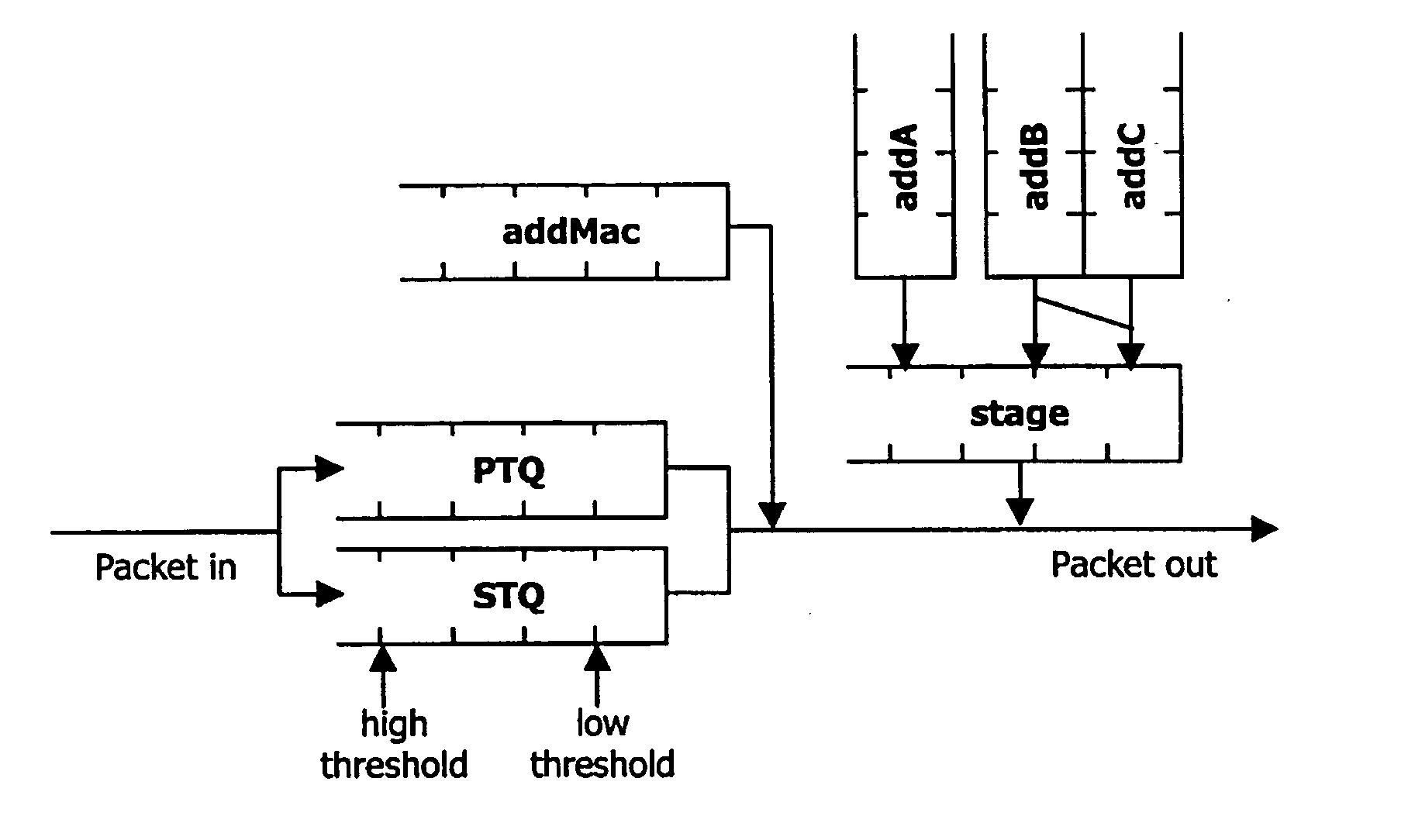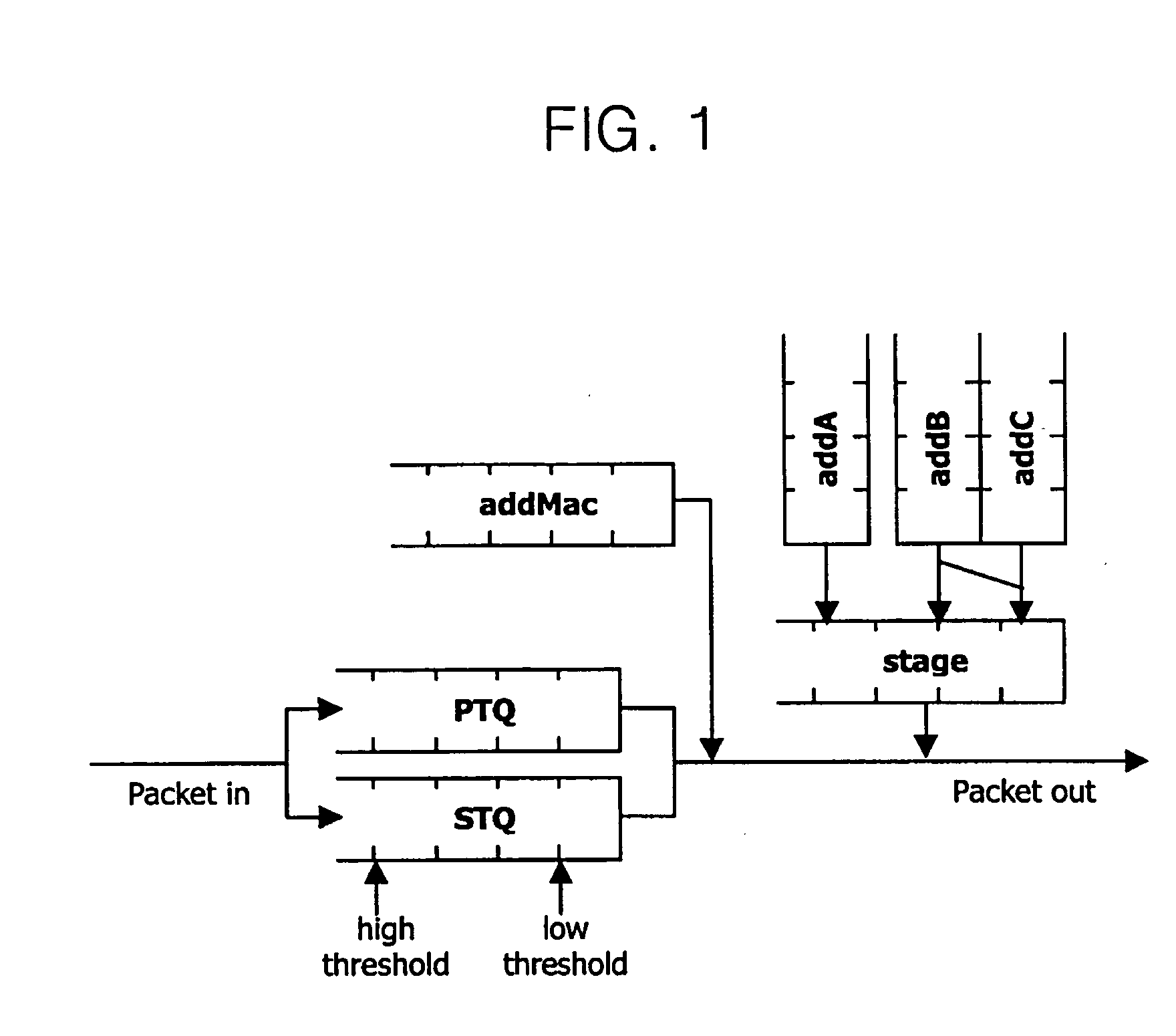Allocating bandwidth using resilient packet ring (RPR) fairness mechanism
- Summary
- Abstract
- Description
- Claims
- Application Information
AI Technical Summary
Benefits of technology
Problems solved by technology
Method used
Image
Examples
Embodiment Construction
[0041] The RPR MAC has addA, addB and addC transmission buffers, shown in FIG. 1, to transmit traffic which has three priorities different with one another as described above, and the three kinds of traffic are transmitted to the ring through a stage buffer.
[0042]FIG. 2 is a view of a process in which a fairness transmission rate is transmitted to upstream nodes by a bandwidth allocation scheme using an RPR fairness mechanism.
[0043] In the process in which nodes 1, 2, 3 and 4 transmit traffic to node 5, when congestion occurs in node 4, node 4 records its fairness transmission rate and MAC address in a fairness message and transmits the message to node 3 after a current advertise interval has been completed. Node 3, which has received that message, reestablishes its allowedRateCongested value as the fairness transmission rate received from node 4 and restricts the amount of Class-C and eMP traffic transmitted by the node so as not to exceed the fairness transmission rate transmitt...
PUM
 Login to View More
Login to View More Abstract
Description
Claims
Application Information
 Login to View More
Login to View More - R&D
- Intellectual Property
- Life Sciences
- Materials
- Tech Scout
- Unparalleled Data Quality
- Higher Quality Content
- 60% Fewer Hallucinations
Browse by: Latest US Patents, China's latest patents, Technical Efficacy Thesaurus, Application Domain, Technology Topic, Popular Technical Reports.
© 2025 PatSnap. All rights reserved.Legal|Privacy policy|Modern Slavery Act Transparency Statement|Sitemap|About US| Contact US: help@patsnap.com



